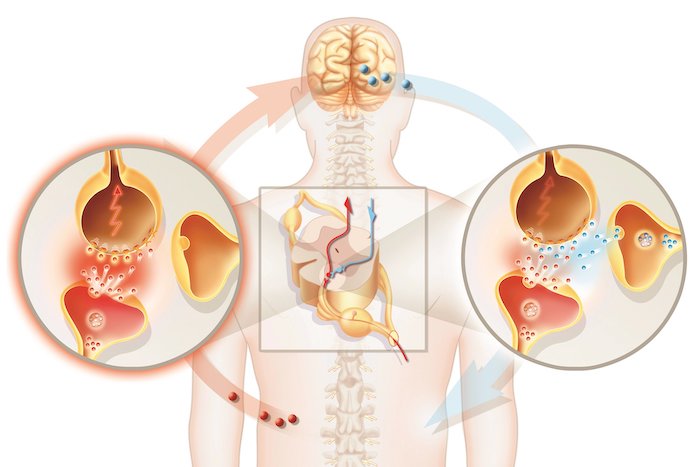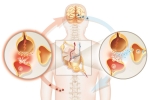
Find out how a variety of chronic pain conditions feel from a first-person perspective, along with coping tips and messages of hope!
The experience of living with chronic pain can be extremely difficult. There is a wide range of chronic pain diagnoses, which have their own set of symptoms and accompanying challenges. We’re all individuals, so even within one type of chronic pain, each person will have different experiences and differ in the way the pain affects their day-to-day lives.
In this article, we’ve been lucky enough to have some chronic pain warriors with a range of conditions share their experiences. They will also share tips for coping and messages of hope because even though living with chronic pain is tough, there is always light in the darkness!
Musculoskeletal Pain
Musculoskeletal pain is chronic pain that affects the joints, bones, and muscles, as well as the surrounding soft tissues.
Back Pain
Back pain is one of the most common types of chronic pain experienced. The pain can be felt anywhere in the back, although it is more commonly felt in the lower back. Often chronic back pain will follow an initial injury but can also be brought on without an injury.
Symptoms of back pain can include:
- Shooting or stabbing pain anywhere in the back
- A dull ache
- Muscle stiffness
- Increased pain with activity such as bending or lifting, as well as general exercise.
- Reduced range of motion
Fibromyalgia
Fibromyalgia causes widespread pain among a wide range of other symptoms. The exact cause of fibromyalgia is unknown, but it’s thought to be caused by a change in the way the central nervous system sends pain messages around the body. Fibromyalgia can be triggered by an emotionally or physically stressful life event.
There is a very wide range of symptoms of fibromyalgia. Some of the more common symptoms include:
- Widespread pain
- Fatigue
- Muscle stiffness
- ‘Painsomnia’: meaning trouble sleeping due to symptoms
- ‘Fibro fog’: cognitive difficulties
- Temperature regulation control issues
- Allodynia: experiencing pain from stimuli that wouldn’t normally cause pain.
- Hyperalgesia: An increased sensitivity to pain.
Arthritis
Arthritis is a condition that affects the joints, causing inflammation, stiffness, and pain, among other symptoms. Arthritis can affect one joint or multiple joints. There are many forms of arthritis, although the most common types are osteoarthritis (OA) and rheumatoid arthritis (RA).
The main symptoms of arthritis include:
- Inflammation in and around the joints
- Stiffness
- Tenderness
- Reduced range of motion
- Weakened muscles
- Warm, red, or itchy skin over the affected joint
Ankylosing Spondylitis
Ankylosing spondylitis is a form of arthritis causing the spine and other areas of the body to become inflamed. Over time this can cause the vertebrae (bones in your spine) to fuse, which reduces mobility.
Chronic Fatigue Syndrome (CFS/ME)
ME stands for myalgic encephalomyelitis. While the primary symptom is extreme fatigue, there are a range of other accompanying symptoms patients can experience. There are several theories about the cause of ME, but much more research needs to be done to find the answers and treatment that people with ME deserve.
Symptoms of ME can include:
- Fatigue
- Problems sleeping
- Joint and muscle pain
- Reduced mobility
- Cognitive issues
- Headaches
- Flu-like symptoms
- Irregular heartbeat
Neuropathic Pain
Neuropathic pain is caused by damage to the nervous system: this can be through accident or illness, among other causes. It’s typically the somatosensory nervous system that is damaged, which is part of the nervous system which detects and processes both internal and external stimuli.
Carpal Tunnel Syndrome (CTS)
CTS is caused by the nerve in the wrist being inflamed, damaged, or experiencing excess pressure. This leads to a range of symptoms, including:
- Pain in the arm, hand, or fingers
- Numbness
- Tingling sensations
- Weakness and reduced mobility in the affected area
Repetitive Strain Injury (RSI)
RSI is chronic pain felt in the muscles, nerves, and tendons caused by overuse or repetitive movements over time. RSI can be felt in the hand, wrist, arm, neck, and shoulders.
Symptoms of RSI include:
- Pain
- Stiffness
- Tingling
- Numbness and weakness
- Cramping
Sciatica
The sciatic nerve runs from your lower back down through your hips and each leg. Sciatica refers to pain in the sciatic nerve, commonly caused by compression of the nerve. The pain is typically only felt on one side of the body.
Symptoms of sciatica include:
- Pain anywhere along the path of the nerve
- Numbness
- Tingling
- Muscle weakness
Precision Pain Care and Rehabilitation has two convenient locations in Richmond Hill – Queens, and New Hyde Park – Long Island. Call the Queens office at (718) 215-1888 or (516) 419-4480 for the Long Island office to arrange an appointment with our Interventional Pain Management Specialist, Dr. Jeffrey Chacko.













